All About Irish Soda Bread
While soda bread is most famously attributed to Ireland, it was actually first created by Native Americans. They were the first to be documented using pearl ash, a natural form of soda formed from the ashes of wood, to leaven their bread without yeast.
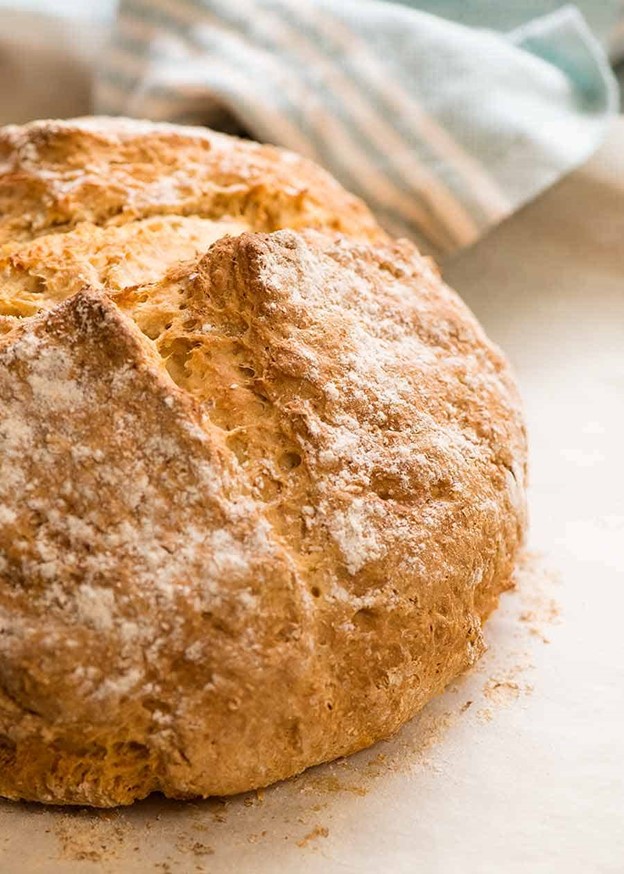
The Irish later discovered and replicated the process. While it seems like an ancient recipe, Irish soda bread history began in the 1830s, when baking soda, or bicarbonate soda, was first introduced to the country.
At the time, widespread famine meant bread had to be made out of the most basic and cheapest ingredients available.
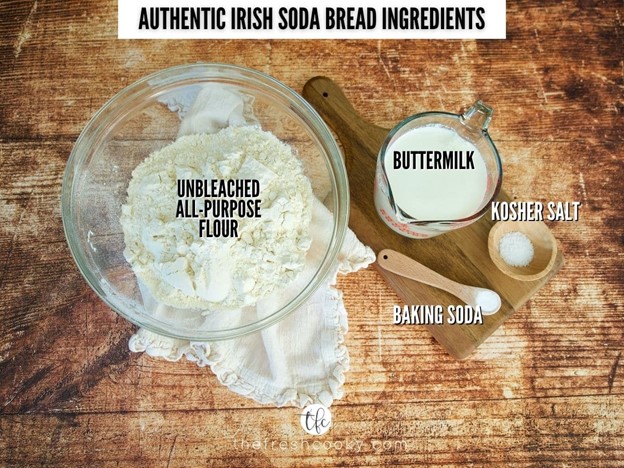
The four ingredients were soft wheat flour, salt, baking soda and sour milk (buttermilk is more commonly used today). Since yeast wasn’t readily available, the combination of baking soda and buttermilk acted as the leavening agent, causing the bread to rise.
The soft wheat flour was better for quick breads, rather than the hard wheat flour typically found in yeasted bread. Since Ireland’s unique climate was only suitable to grow soft wheat, soda bread was the perfect match for the country.
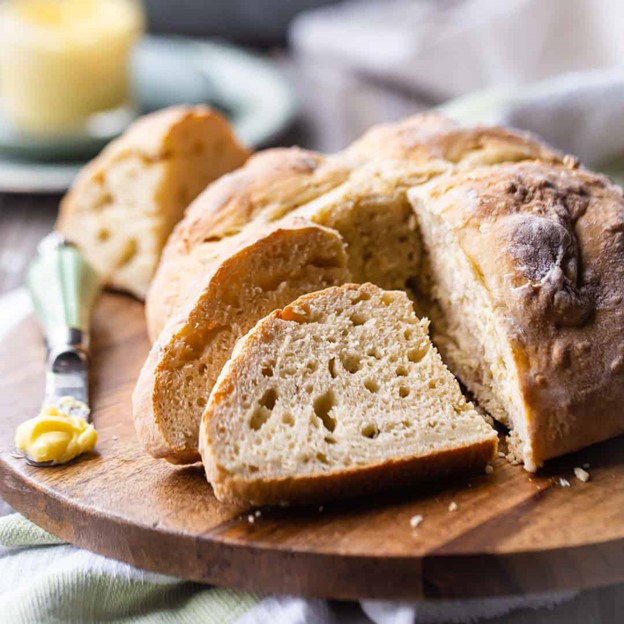
Many Irish families also lived in isolated farm areas with no access to ovens, and soda bread solved this problem too. The bread was cooked in three-legged iron pots or baked on griddles over open hearths. This gave the bread its famous hard crust, dense texture, and slightly sour tang.
The unique texture of soda bread is a result of the reaction between the acidic sour milk and baking soda, which formed small bubbles of carbon dioxide in the dough.
The shape of soda bread is also steeped in tradition. The Northern regions of Ireland divide their dough into four triangular shapes, with each triangle cooked on a flat griddle.
The Southern Irish regions bake their loaves in a classic round fashion and cut a cross on top of the bread. This was done for superstitious reasons, as families believed a cross on top of the bread would let the fairies out or ward off evil and protect the household.
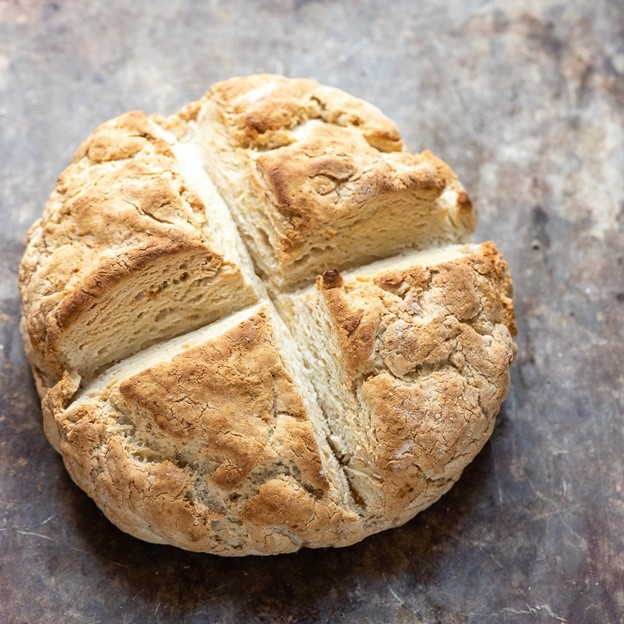
The method of cooking soda bread is very quick, and it was usually made every two to three days and eaten with the main meal. The traditional way to eat soda bread is to break off a piece, split it and slather it in butter.
Today, you don’t have to go far in Ireland to smell the aroma of soda bread wafting out of a bakery, while many Irish families still bake their own bread from cherished recipes passed down through the generations.
There’s even a Society For the Preservation of Irish Soda Bread. The organization is dedicated to protecting this national culinary treasure. They encourage people to get to know their Irish roots and learn to make traditional Irish soda bread.
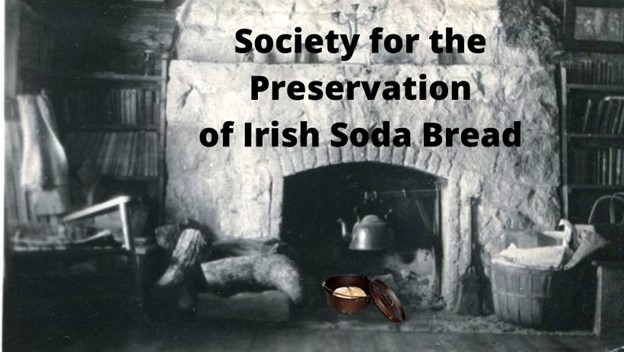
They pay tribute to how far the Irish have come since the famine years (known as An Gorta Mor), when soda bread was often the only thing on the table to eat. The society is also quite firm on the traditional ingredients of soda bread: flour, salt, baking Soda, buttermilk.
“Add anything else and that makes it a Tea Cake!” Very well. We won’t. Here’s the recipe for traditional Irish soda bread. Our thanks goes to www.recipetineats for this treat!
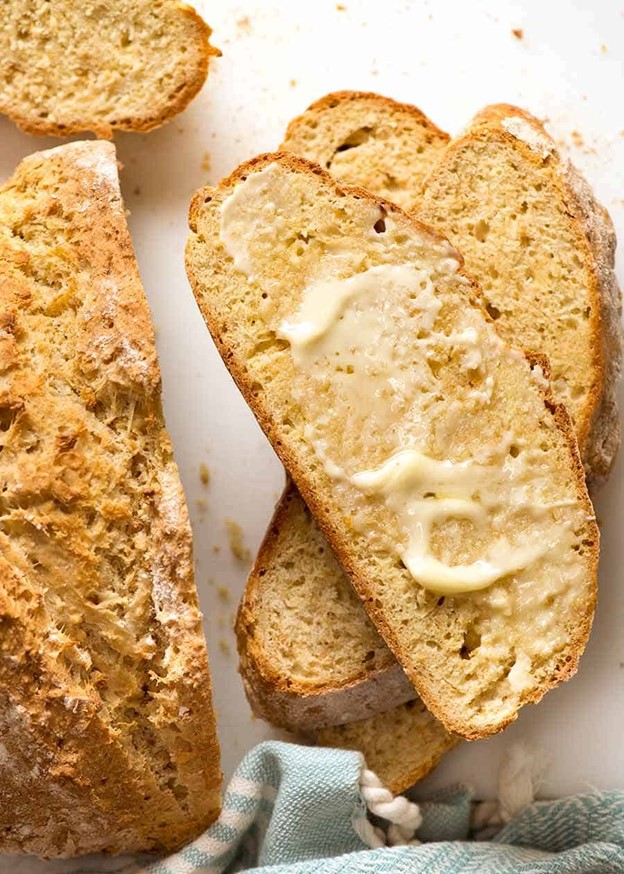
2 cups all-purpose flour
1 3/4 cups whole wheat flour
2 to 3 tablespoons all-purpose flour (for dusting)
1 1/2 teaspoons baking soda
1 1/2 teaspoons salt
2 cups buttermilk
Directions:
Add Recipe to Cook'n
blog comments powered by Disqus

The Irish later discovered and replicated the process. While it seems like an ancient recipe, Irish soda bread history began in the 1830s, when baking soda, or bicarbonate soda, was first introduced to the country.
At the time, widespread famine meant bread had to be made out of the most basic and cheapest ingredients available.

The four ingredients were soft wheat flour, salt, baking soda and sour milk (buttermilk is more commonly used today). Since yeast wasn’t readily available, the combination of baking soda and buttermilk acted as the leavening agent, causing the bread to rise.
The soft wheat flour was better for quick breads, rather than the hard wheat flour typically found in yeasted bread. Since Ireland’s unique climate was only suitable to grow soft wheat, soda bread was the perfect match for the country.

Many Irish families also lived in isolated farm areas with no access to ovens, and soda bread solved this problem too. The bread was cooked in three-legged iron pots or baked on griddles over open hearths. This gave the bread its famous hard crust, dense texture, and slightly sour tang.
The unique texture of soda bread is a result of the reaction between the acidic sour milk and baking soda, which formed small bubbles of carbon dioxide in the dough.
The shape of soda bread is also steeped in tradition. The Northern regions of Ireland divide their dough into four triangular shapes, with each triangle cooked on a flat griddle.
The Southern Irish regions bake their loaves in a classic round fashion and cut a cross on top of the bread. This was done for superstitious reasons, as families believed a cross on top of the bread would let the fairies out or ward off evil and protect the household.

The method of cooking soda bread is very quick, and it was usually made every two to three days and eaten with the main meal. The traditional way to eat soda bread is to break off a piece, split it and slather it in butter.
Today, you don’t have to go far in Ireland to smell the aroma of soda bread wafting out of a bakery, while many Irish families still bake their own bread from cherished recipes passed down through the generations.
There’s even a Society For the Preservation of Irish Soda Bread. The organization is dedicated to protecting this national culinary treasure. They encourage people to get to know their Irish roots and learn to make traditional Irish soda bread.

They pay tribute to how far the Irish have come since the famine years (known as An Gorta Mor), when soda bread was often the only thing on the table to eat. The society is also quite firm on the traditional ingredients of soda bread: flour, salt, baking Soda, buttermilk.
“Add anything else and that makes it a Tea Cake!” Very well. We won’t. Here’s the recipe for traditional Irish soda bread. Our thanks goes to www.recipetineats for this treat!

Traditional Irish Soda Bread
Ingredients:
2 cups all-purpose flour
1 3/4 cups whole wheat flour
2 to 3 tablespoons all-purpose flour (for dusting)
1 1/2 teaspoons baking soda
1 1/2 teaspoons salt
2 cups buttermilk
Directions:
1. Preheat oven to 220°C/430°F (200°C fan).
2. Line tray with baking paper.
3. Whisk both flours (not Extra Flour), baking soda and salt in a bowl.
4. Add buttermilk, stir until it’s too hard to stir anymore.
5. Sprinkle 2 tbsp Extra Flour onto work surface, scrape out dough, sprinkle with more flour.
6. Gently knead no more than 8 times, bring together into a ball. (Note 4)
7. Transfer to tray, pat into 2.5cm/1? thick disc.
8. Cut cross on surface 1cm / 0.3? deep using serrated knife.
9. Bake 20 minutes. Turn oven down to 200°C/390°F (180°C fan).
10. Bake further 20 minutes, or until the base sounds hollow when tapped in the middle.
11. Transfer to rack and cool for at least 30 minutes before slicing.
2. Line tray with baking paper.
3. Whisk both flours (not Extra Flour), baking soda and salt in a bowl.
4. Add buttermilk, stir until it’s too hard to stir anymore.
5. Sprinkle 2 tbsp Extra Flour onto work surface, scrape out dough, sprinkle with more flour.
6. Gently knead no more than 8 times, bring together into a ball. (Note 4)
7. Transfer to tray, pat into 2.5cm/1? thick disc.
8. Cut cross on surface 1cm / 0.3? deep using serrated knife.
9. Bake 20 minutes. Turn oven down to 200°C/390°F (180°C fan).
10. Bake further 20 minutes, or until the base sounds hollow when tapped in the middle.
11. Transfer to rack and cool for at least 30 minutes before slicing.
Recipe formatted with the Cook'n Recipe Software from DVO Enterprises.
 Alice Osborne
Alice Osborne
Weekly Newsletter Contributor since 2006
Email the author! alice@dvo.com
Sources:
- www.recipetineats.com
- www.thefreshcooky.com
- www.bakingamoment.com
- www.facebook.com
- www.boulderlocavore.com
